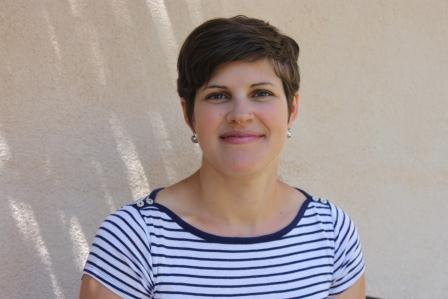
Alumni Profile; M.A. 2002
Elaine B. Stiles, PhD is Associate Professor of Historic Preservation in the Cummings School of Architecture at Roger Williams University where she teaches courses in historic preservation theory and practice, the history of the built environment, and cultural landscape studies. Elaine’s research focuses on mass-produced housing and modern spaces of consumption in pursuit of better understanding of the history and sociocultural resonance of everyday spaces. Her preservation work focuses on reparative practices in documentation, designation, and appreciation of cultural and historic resources. Elaine holds a BA in Art History from Smith College, an MA in Preservation Studies from Boston University, and a PhD in Architecture from the University of California, Berkeley.
What have you been doing since you graduated from BU? Details about your current and past employment? Accomplishments you’re proud of? Challenges you’ve encountered?
I started my post-BU preservation career working in cultural resource management and environmental planning on the east coast, primarily as an architectural historian and preservation planner on large-scale transportation and land development projects. I moved to the Bay Area of California in the mid 2000s, where I worked for a preservation architecture firm and then the Western Regional Office of the National Trust for Historic Preservation. Over the course of my career, I’ve worked on projects from the rural reaches of northern Maine to the streets of San Francisco, covered the Pacific Northwest for the NTHP, and staffed the organization’s TrustModern program. I went back to graduate school to get a PhD in Architecture (History and Theory) to be more involved in preservation education and shaping the intellectual aspects of the movement. My scholarly research focuses on architectural underdogs such as mass-produced housing, modern spaces of consumption, and suburban spaces in pursuit of better understanding of the history and sociocultural importance of everyday spaces. My current preservation work focuses on reparative designation work to foreground and daylight under-recognized stories and historic places.
How has your time in the Preservation Studies Program shaped your professional and personal lives?
The BU program gave me a fantastic foundation in how to engage with architecture from a cultural and social perspective, as well as a formal perspective and the importance of public outreach and engagement – or in other words, people! – in preservation work. I also very much value the strong planning focus of the program and opportunities to engage with architecture and preservation professional and nonprofit organizations around the region as part of our coursework.
What advice would you give to students in the program looking for careers in Preservation? What do you wish you had known when you were first entering the field?
Preservation is a rewarding career in so many ways. You work with spaces and places that interest you, continuously learn new things, and support important public decision making about the future of our communities. Technical skills are important (architectural history, cultural landscape studies, law and regulation) but equally important are public engagement and organizing skills, so seek out opportunities to build these.